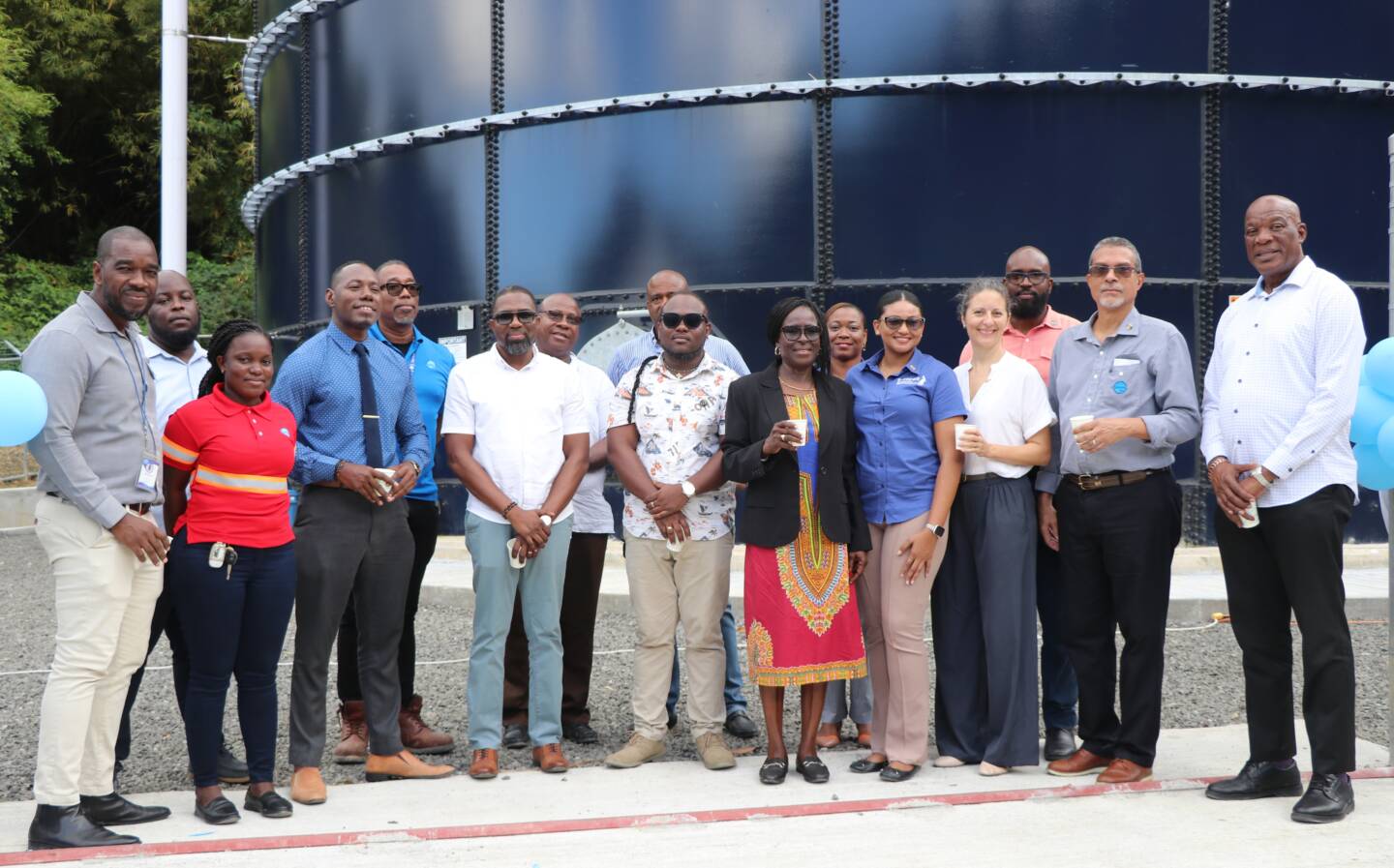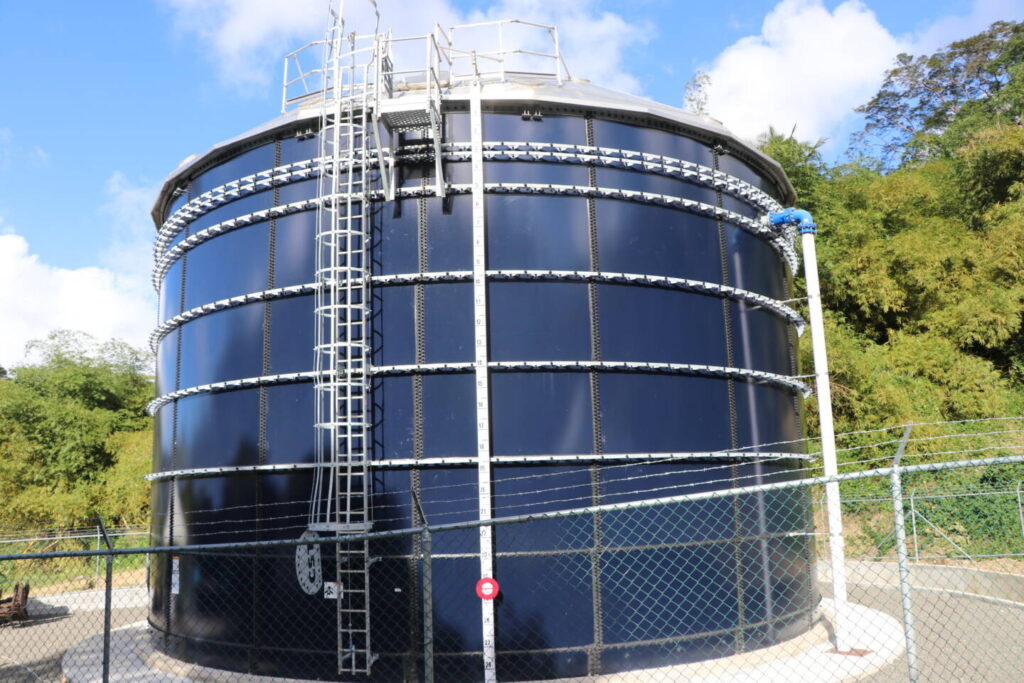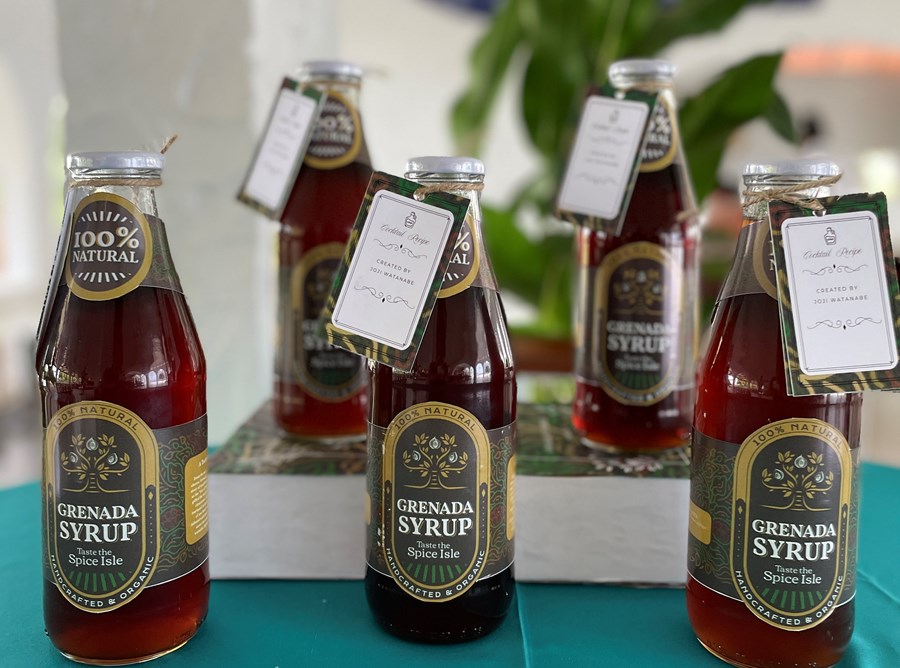Now Reading: Nawasa commissions Tufton Hall Water Storage Tank
-
01
Nawasa commissions Tufton Hall Water Storage Tank

Nawasa commissions Tufton Hall Water Storage Tank
The National Water and Sewerage Authority (Nawasa) celebrated the commissioning of the Tufton Hall Water Storage Tank on Wednesday, 5 February 2025, marking a significant milestone in Grenada’s efforts to enhance water security and climate resilience.

The event, held at the Tufton Hall Water Treatment Plant, brought together government officials, community leaders, and international partners to highlight the transformative impact of the 360,000-gallon storage tank under the Grenada Climate Resilient Water Sector (G-CREWS) project.
The ceremony was attended by key stakeholders, including Member of Parliament for St Mark Dr Clarice Modeste-Curwen, Parliamentary Secretary Senator Quinc Britton, Permanent Secretary in the Ministry of Public Utilities Alva Browne and Nawasa’s Board Chairman Philip Alexander. Representatives from the German Development Agency (GIZ), the Green Climate Fund (GCF) and other project partners were also present. In his welcoming remarks, Nawasa’s Acting General Manager Terrence P Smith reflected on the historical significance of the Tufton Hall site. “This plant holds a special place in my heart,” he said, recalling his first assignment as a junior engineer in 1983 when he oversaw the construction of the original Tufton Hall Water Treatment Plant. “What was once a disused cocoa estate has now been transformed into a state-of-the-art facility that will serve the community for generations to come.”
The new storage tank, constructed at a cost of approximately $2.6 million, will ensure a reliable water supply for approximately 1,565 households in communities such as Duquesne, Victoria, Diamond, and River Sallee. During emergencies, such as hurricanes, the tank will provide up to 3 days of water storage, significantly enhancing the community’s resilience.
The G-CREWS project, funded by the German government, the GCF, and the Government of Grenada, is now in its 6th and final year. It has been instrumental in improving Grenada’s water infrastructure, with the Tufton Hall tank being the first of 9 planned facilities across the island.
Nawasa’s Board Chairman Philip Alexander, emphasised the project’s broader impact. “This tank is the first of 9 planned storage facilities,” he said. “It reflects our proactive approach to meeting the growing demands of our people and building a more resilient national water system.”
Alexander praised the contributions of the GCF, GIZ, and the Grenada Development Bank, noting that the project represents a transformative approach to water management. “The 1,500 households benefiting from this project are the tip of the iceberg,” he stated. “By implementing strategies like rainwater harvesting, we can shift resources to areas with greater demand, such as the south of the island, where the bulk of our population and tourism industry reside.”
Dr Clarice Modeste-Cowen, Member of Parliament for St Mark, highlighted the importance of water conservation and public awareness. “We must look at how we can harness rainwater more effectively,” she said. “Rainwater harvesting should be the next phase of this initiative.”
Dr Modeste-Cowen also underscored the importance of water for Grenada’s tourism sector, particularly in the south of the island. “During the dry season, hoteliers struggle to provide water for their guests,” she said. “This project is not just for St Mark; it is for all of Grenada, including our tourism belt.” Alva Browne, Permanent Secretary in the Ministry of Public Utilities, reaffirmed Government’s commitment to water security. “When the well is dry, we know the worth of water,” he said, quoting Benjamin Franklin. “This project reaffirms our commitment to ensuring that no community in Grenada is left without access to clean and reliable water.” Browne highlighted the broader implications of the project, stating that a stable water supply is essential for agriculture, tourism, education, and economic development. “It means peace of mind for families and businesses who can trust that when they turn on the tap, water will flow.”
Marion Geiss, Head of Projects for GIZ G-CREWS, emphasised the significance of the project as a symbol of collective responsibility and resilience. “This tank is not just a piece of infrastructure; it is a testament to what we can achieve when we work together,” she said.
Geiss shared insights from a historical paper commissioned by GIZ, authored by Dr Angus Martin, which traces Grenada’s water management practices back to 1600. “From clay pots and bamboo pipes to modern storage tanks, Grenada’s journey with water has been one of innovation and adaptation,” she noted.
The Tufton Hall tank, part of a broader plan to construct 9 storage facilities across Grenada, Carriacou, and Petite Martinique, will provide critical water reserves during droughts, storms, and flooding events. It will serve over 1,500 households in St Mark and extend to communities in St John, ensuring access to clean water even in times of scarcity.

As the G-CREWS project enters its final year, stakeholders remain committed to realising additional infrastructure projects that will bolster Grenada’s resilience to climate change. “Together, we can ensure a sustainable and water-secure future for Grenada, Carriacou, and Petite Martinique,” Geiss concluded. The Tufton Hall Water Storage Tank stands as a testament to the power of collaboration and innovation in addressing the challenges of climate change and water security.




























